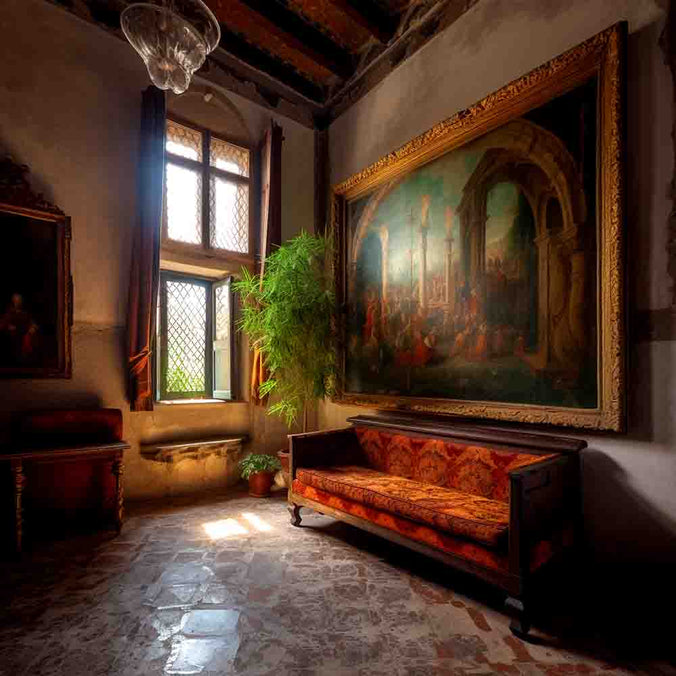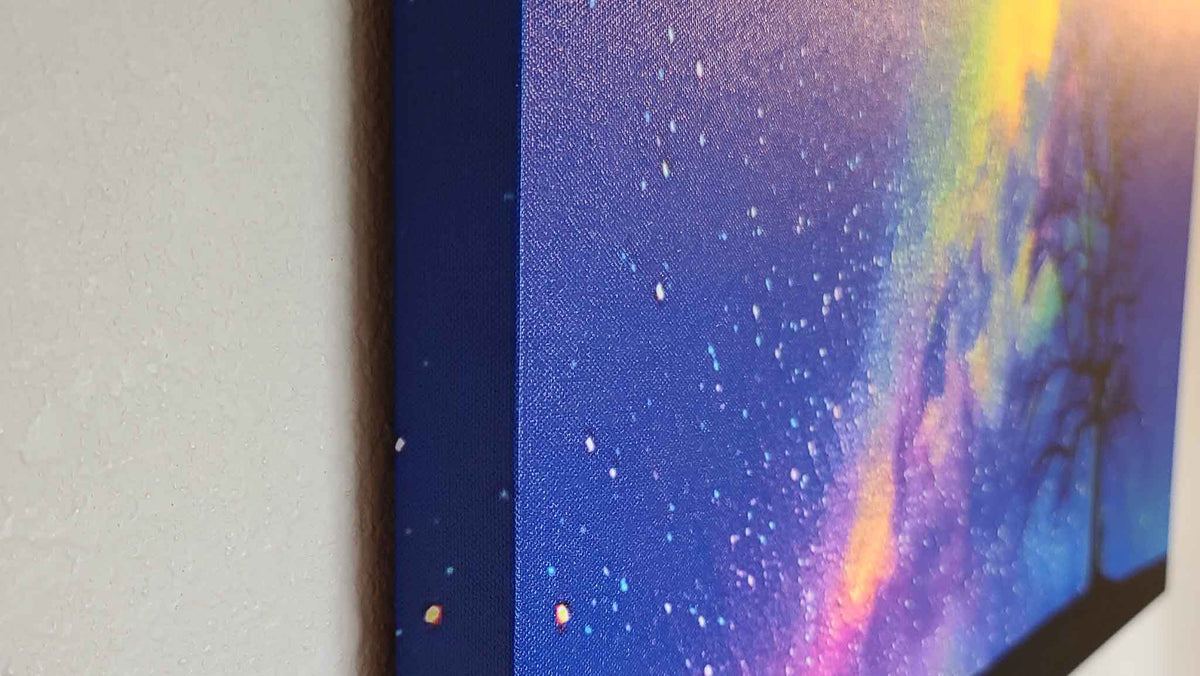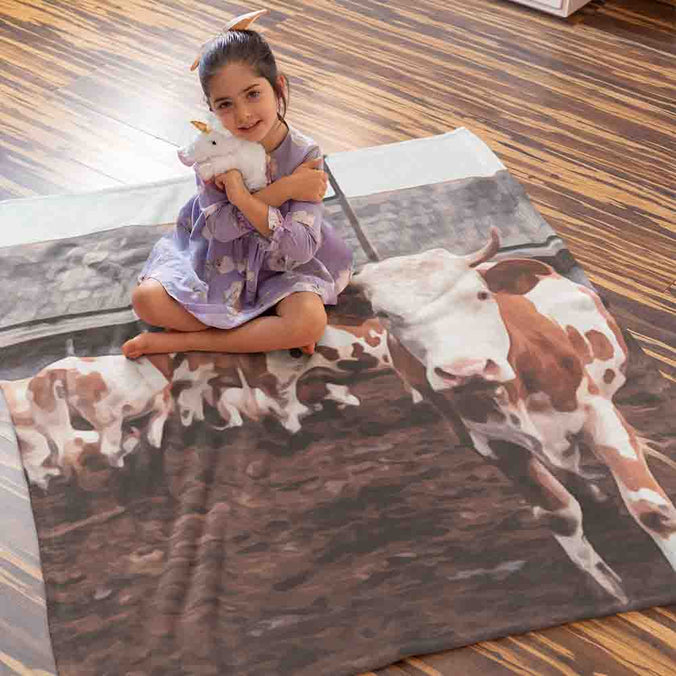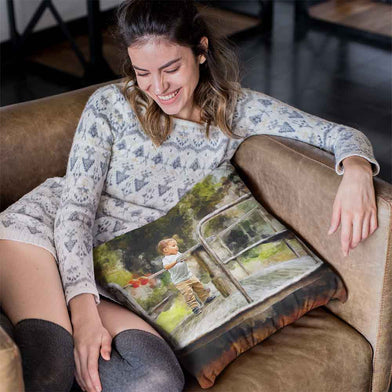The Evolution of Canvas Art: From Banners to Modern Décor

The Evolution of Canvas Art: From Banners to Modern Décor
Canvas art has evolved significantly since its inception as processional banners in the 13th century, becoming an essential component of artistic expression and interior design. Oil paintings emerged in the 15th century, with canvas offering flexibility, durability, and affordability over wood panels. Modern advancements have enabled the creation of photo canvas prints and digital art, which are accessible and customizable. As the art world looks towards sustainability and innovation, eco-friendly materials and cutting-edge technology are shaping the future of canvas art, ensuring its continued role in enriching our lives and living spaces.
Canvas and Its Origins in Processional Banners
Canvas, a plain woven fabric, has a multitude of uses. Commonly stretched across wooden frames, it is a popular choice for oil paintings. Canvas was first used for processional banners in the 13th century. Modern canvas is made from materials like cotton, linen, and polyvinyl chloride.
These early banners were crafted from thin, tightly woven canvas and coated with gesso grounding. The fabric's tensioning helped prevent folds, and some banners were even used as altarpieces. Many of these early banners resembled canvas paintings due to their fine craftsmanship.
The Emergence of Oil Paintings on Canvas in the 15th Century
Oil paintings on canvas started appearing in the 15th century, primarily in the Netherlandish region. These early paintings featured layered and glazed techniques. The oil-based paintings quickly spread throughout Northern Europe and Italy, offering a faster way to paint large canvases. Oil-based paints were more durable than traditional tempera paints.
Canvas provided several advantages over wood panels. It was more flexible, durable, and lighter, allowing for larger formats without warping or cracking. Italian and Spanish artists embraced canvas art, creating masterpieces like Las Meninas by Diego Velazquez.
The affordability and transportability of canvas made it a popular choice among artists. Canvas paintings didn't require complicated layers of gesso, reducing shipping costs. The transition to canvas began in Venice and spread to Northern Europe and Italy in the early 16th century.
Capturing the Beauty of Antique Oil Paintings with Replicas
Antique oil paintings tell fascinating stories through their beauty and technique. However, their high prices make them inaccessible to most people. Fortunately, replicas of these famous paintings are available at a fraction of the original cost, found in museums and epoch stores.
The Popularity of Photo Canvas Prints Today
Photo canvas prints have become a popular home décor trend in recent years. However, some companies may take advantage of consumers and overcharge for these items. Fortunately, there are quality options available at more affordable prices.
Advancements in technology, such as wide-format inkjet printers and high-quality canvas materials, have made it possible to create stunning canvas wall art that closely resembles traditional oil paintings. This innovation has freed artists from the constraints of reproducing exact images on canvas, allowing for more cost-effective production.
Enhance Your Interior Décor with Affordable Photo Canvas Prints
Photo canvas prints can transform any room, from living rooms to home offices, by adding warmth, inspiration, and style. Whether you're searching for a unique, personalized gift or something for yourself, photo canvas prints are an ideal solution for your home décor needs.
One of the main benefits of photo canvas prints is their durability. They can withstand various weather conditions and are easier to clean than other types of prints. Unlike traditional art, they don't fade and can be hung in direct sunlight without compromising the colors.
Personalize Your Space with Custom Canvas Prints
Canvas prints offer a unique way to display photographs or artwork. You can either upload your image or choose from a wide selection of pre-made designs. These prints are available in various sizes and thicknesses, and the canvas can be finished with different types of borders for an added touch.
Decorate your home or office with an array of designs and styles, or personalize your canvas print by incorporating your favorite photos or images. Canvas prints add personality to any room and can be custom-made to feature your cherished memories, such as family photos or snapshots from your travels.
Choose My Photo Art for Quality Canvas Prints
At My Photo Art (myphotoartstore.com), we offer premium quality canvas prints at competitive prices. Our family-owned business in the Midwest is dedicated to providing top-notch customer service, quick turnaround times, and exceptional products.
Choose from our vast selection of canvas wall art wraps, tote bags, throw pillows, refrigerator magnets, and fleece blankets. Enjoy the convenience of customizing your order to suit your personal taste and home décor style.
Don't miss out on our special promotions! Subscribe to our newsletter and stay updated on the latest deals and discounts.
The Role of Canvas in the Renaissance and Baroque Periods
During the Renaissance and Baroque periods, canvas art played a significant role in the development of artistic styles and techniques. Italian artists like Leonardo da Vinci, Raphael, and Michelangelo experimented with canvas as a medium to create large-scale works of art. Canvas was lighter, more affordable, and more versatile than wood panels, allowing artists to produce expansive compositions that were easier to transport and display. The shift from wood to canvas also led to innovative painting techniques, such as glazing and impasto, which added depth, texture, and a sense of movement to artworks.
The Impact of Canvas on the Development of Art Techniques
The introduction of canvas as a painting surface transformed the way artists approached their work, encouraging new techniques and styles. Canvas's flexibility allowed artists to experiment with texture and layering, leading to innovations like impasto, where thick layers of paint were applied to create a textured surface. The smoothness of canvas also made it an ideal surface for detailed and intricate brushwork. As artists gained greater control over their medium, they were able to achieve more realistic representations and develop the illusion of depth and perspective in their paintings. The use of canvas also facilitated the exploration of new pigments and color combinations, leading to a richer and more diverse visual language in art.
The Shift from Traditional to Digital Art on Canvas
With the advent of digital technology, the world of canvas art has evolved yet again. Artists now have the option to create digital paintings and illustrations using software like Adobe Photoshop, Corel Painter, or Procreate on tablets, which can then be printed onto canvas. Digital art allows for infinite possibilities in terms of color, texture, and effects, enabling artists to push the boundaries of creativity. Digital canvas prints also offer a more affordable and accessible way for art enthusiasts to own and display their favorite works. As technology continues to advance, the fusion of traditional and digital art on canvas is becoming more seamless, resulting in innovative and captivating pieces that appeal to a wide audience.
The Benefits of Canvas Art in Interior Design and Home Staging
Canvas art is an incredibly versatile and popular choice for interior design and home staging. It offers a number of benefits that make it an ideal choice for both professional designers and homeowners. Firstly, canvas prints are lightweight and easy to hang, making them a practical option for various spaces. They can also be customized to fit any design aesthetic, from traditional to contemporary. Canvas art can act as a focal point in a room, adding visual interest and personality to the space. Furthermore, canvas prints can be easily swapped out or rearranged, allowing for the effortless transformation of a room's design without the need for major changes. Overall, the flexibility and adaptability of canvas art make it a valuable asset in interior design and home staging.
The Future of Canvas Art: Sustainability and Innovation
As the art world continues to evolve, sustainability and innovation are becoming increasingly important factors in the future of canvas art. With a growing emphasis on eco-friendly materials and practices, artists and manufacturers are exploring sustainable alternatives to traditional canvas materials, such as using organic cotton or recycled polyester blends. Technological advancements are also driving innovation in canvas art, with the development of new printing techniques and the integration of augmented reality features into artworks. These innovations not only enhance the visual appeal and interactivity of canvas art but also contribute to a more environmentally responsible and sustainable future for the art industry.
Check out our simple 1, 2, 3 process of how easy and simple it is to order your custom artwork by clicking here.
The evolution of canvas art has significantly impacted the art world, transforming artistic techniques and styles, and expanding the possibilities for creative expression. From its early beginnings as processional banners to the innovative oil paintings of the Renaissance and Baroque periods, canvas art has continued to evolve and adapt to modern trends and technologies. Today, canvas art remains an integral part of interior design and home staging, with modern throw pillows providing a stylish and functional addition to living spaces.
Digital art on canvas has opened up a world of possibilities for artists and art enthusiasts alike, offering an affordable and accessible way to display and own captivating works of art. As we look to the future, sustainability and innovation are set to shape the trajectory of canvas art even further, with an emphasis on eco-friendly materials and practices, and the integration of cutting-edge technology into the creation and display of artworks.
Canvas art has come a long way from its humble beginnings, and its versatility, adaptability, and enduring appeal ensure that it will remain a vital part of the art world and our living spaces for years to come. Whether you're an artist, a collector, or simply someone looking to enhance the aesthetic appeal of your home, canvas art, including modern throw pillows, offers an exciting and diverse range of options to suit any taste and style.
Leave A Reply
Your email address will not be published. Required fields are marked *






